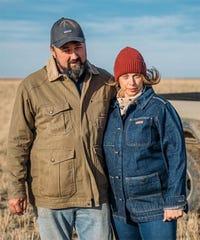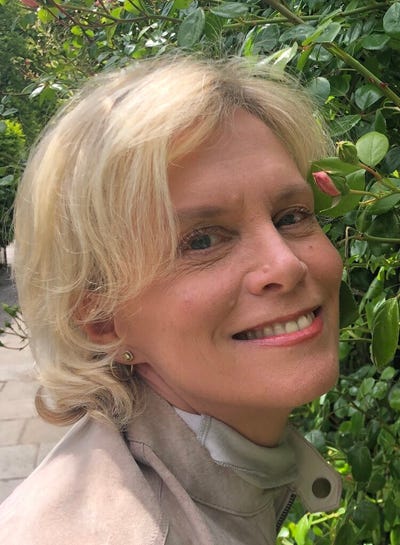Understanding and supporting the agricultural ‘E’ in ESGUnderstanding and supporting the agricultural ‘E’ in ESG
Mad Agriculture launches Regenerative Impact Program for CPGs to realize regenerative sourcing goals.

Jody and Crystal Manuel have the kind of picturesque farm you’d like to put on your product label. Prairie Grass Ranch is a Regenerative Organic Certified (ROC) fifth-generation farm in northern Montana, where the Manuels have raised six children along with oats, all kinds of legumes, alfalfa and lots of animals including grass-fed cattle, goats, a donkey and some family dogs. The duo manages their land with intention, in ecological balance with the hilly, arid Montana landscape that surrounds them.
There is growing interest on behalf of food companies to source from more regenerative farms like the Manuel’s. It is now widely known that agriculture and associated land use changes contribute 25% of global greenhouse gas (GHG) emissions. Scope 3 emissions—those arising from a brand’s supply chain—typically represent more than 70% of a food company’s total emissions, and most of that comes from the farms that are growing their ingredients. Recent SEC rulings have signaled that publicly traded companies and companies seeking financing will be required to disclose their greenhouse gas emissions, including Scope 3. All of this adds to heightening interest around the term “regenerative,” and companies are earnestly (and not so earnestly) coming up with their own definitions of what that means and how it informs their supply chains and sourcing strategies.
But are the ways that food companies are defining and prioritizing farming practices and outcomes reflective of a truly regenerative agriculture? Are these corporate priorities actually helping farmers farm better? Put another way, can a robust understanding and advocacy of the agricultural “E” in ESG contribute to improvements in farming and food?
Nestlé—the world’s biggest food manufacturer—has announced its intention to be net-zero by 2050, and one of the ways it plans to get there is to advance regenerative agriculture amongst its suppliers. If measuring carbon is the incentive to get brands to pay attention to what is happening on the farm, that’s a start. But we have to be careful here: carbon doesn’t tell the whole story, and it can create opportunities for greenwashing because solely measuring carbon doesn’t truly reflect the overall health and vitality of the farm.
Sourcing for the regenerative revolution
 Elizabeth Stein, founder and CEO of Purely Elizabeth, studied holistic nutrition and learned early on about the connection between healthy farms and healthy food. Her company’s commitment to regenerative agriculture is baked into the brand’s DNA. As part of their sustainability journey, Stein recognized that she wanted to more deeply understand how regenerative practices impact the health and vitality of the farms from which they source ingredients. “We want the data and the information to validate that these practices are doing what we’re saying and what we think they are doing.”
Elizabeth Stein, founder and CEO of Purely Elizabeth, studied holistic nutrition and learned early on about the connection between healthy farms and healthy food. Her company’s commitment to regenerative agriculture is baked into the brand’s DNA. As part of their sustainability journey, Stein recognized that she wanted to more deeply understand how regenerative practices impact the health and vitality of the farms from which they source ingredients. “We want the data and the information to validate that these practices are doing what we’re saying and what we think they are doing.”
Emily Griffith, founder and CEO of Lil Bucks, became obsessed with sprouted buckwheat when she first tasted it at an Australian café. It was not only delicious, it made her feel great too. When she came back to the U.S. and started doing some research, Griffith learned that buckwheat isn’t just good for people, it’s also great for farms. Buckwheat breaks down phosphorus in the soil, making it available to other crops. It attracts beneficial insects and is fast growing, which suppresses weeds and protects soil from erosion, all of which help build soil organic matter.
Griffith reflected: “When I was starting Lil Bucks, I don’t think I had ever even met a farmer. But when I started to talk to growers, they told me they would love to grow buckwheat but there just wasn’t the demand for it. Some had even grown it at a loss, selling it off as animal feed, just to improve their soil health. So I thought, ‘I’ll create a market for it,’ because it was the right thing to do.”
At Mad Agriculture, we ardently believe that the regenerative revolution in agriculture hinges on the commitment of buyers like Stein and Griffith to source from regenerative (which we strongly believe includes organic) farms. Farmers won’t grow what they can’t sell. Buyers are absolutely critical to encourage farmers to move from conventional to regenerative farming. As Lil Bucks shows, buying crops from regenerative farms (or those that are transitioning to regenerative) empowers farmers to diversify their rotations, which can enhance many of the ecological functions of a farm, including carbon sequestration, water quality and storage, the biodiversity of insects, plants, and birds, and much more.
To help brands on their regenerative journey, Mad Ag is piloting a multi-year Regenerative Impact Program with Purely Elizabeth and Lil Bucks. We’ve worked closely with both to discover, design and implement programs that meet their regenerative sourcing and climate action goals. It starts with brand-to-farm sourcing contracts: Purely Elizabeth will in part be sourcing ROC oats from the Manuel’s farm in Montana, and Lil Bucks will continue sourcing ROC buckwheat from A-Frame Farm in Minnesota. Mad Ag will use its scientific capacities to understand the impact of regenerative sourcing and communicate that impact in a way that can be shared with their customers. The research will answer questions such as these:
How does regenerative organic agriculture impact soil carbon, improve soil health, and enhance biodiversity?
What is the benefit of specific crops, such as oats, buckwheat, rye, lentils and more?
What is the role of a specific crop within a regenerative organic farming system?
What is the nutrient profile and density of specific ingredients (when the data is available), and does regenerative organic agriculture affect quality?
Creating direct sight lines from the brand to the farm also allows for the development of transparent and authentic messaging for these companies’ consumers. As Stein observed: “The storytelling is really important. We want to invite our customers on our regenerative journey. We don’t have everything figured out, but we do know that step one is starting at the farm.”
Stein and the Manuels recently met, and Stein was thrilled to learn that Crystal Manuel's own wellness journey led to her mission to bring more nutrient-dense food to the world through regenerative farming. Stein noted, “This mission exactly aligns with our core values and vision. Knowing that the health and diversity of our soil directly impacts the nutritional value of our foods, and in turn our gut and overall health, we could not more excited to embark on this regenerative journey with Jody and Crystal.”
Brand-to-farmer relationships
Luke and Ali Peterson

Luke and Ali Peterson
The Manuels are looking forward to hosting the Purely Elizabeth team at Prairie Grass Ranch this summer. Having had the experience of working with companies that have made verbal commitments that have fallen by the wayside when unmoored corporate interests move on to other priorities, Jody Manuel reflected, “Our experience with some of these buyers is that they have a tendency to work just fine until they don’t. We’ve been left holding the bag for trucking costs, been forced to buy seed that doesn’t germinate, contracts have been abandoned, all sorts of long-term verbal commitments have fallen by the wayside. When compared to companies we work with that exhibit a real, lasting level of commitment—for example, sending representatives for personal field visits, sitting at your table and sharing a meal or even a beer at the local brew pub—the value of personal connections becomes clear.”
Griffith talks passionately about her relationship with A-Frame Farm owners Luke and Ali Peterson. “I think as consumers we really do want to know the people behind the food we eat. The food system is so complex that, as a whole, we've lost that connection. Getting to know the family growing my favorite super-seed, all the love and insane amount of planning and work that goes into it—seeing Luke post on Instagram out on the combine with his son—it gives a deeper meaning to our products and mission. I know A-Frame needs brands like Lil Bucks to do the type of farming they do, but as someone without any farming background or knowledge prior to Lil Bucks, I'm so mind-blown by their dedication to regenerative farming over the years. I say without exaggeration that it has been the greatest honor to create a business that enables A-Frame to do this most important work on the field, and get paid fairly for it, despite the obstacles up against us both!”
While these brand-to-farmer partnerships may not be achievable for every food company, there are important takeaways for all. What regenerative agriculture actually means—its principles and practices—must flow from the farm to the C-Suite, not the other way around. It must inform product development. As an industry, we can leverage the growing interest and priority of measuring the agricultural “E” in ESG but if we really want it to result in healthier food, healthier farms, and a healthier planet, corporate priorities must be designed in a way that helps farmers farm better. There is great reward for brands that genuinely incorporate this approach in their sourcing strategies, including the opportunity to communicate their regenerative bona fides to their consumers. Let’s work together as an industry to define and deliver on the promise of regenerative agriculture for farmers, for people, and for our planet.
Elizabeth Candelario is the director of strategic partnerships for Mad Agriculture, whose mission is nothing less than to revolutionize agriculture for the benefit of farmers, people and planet.
About the Author
You May Also Like





